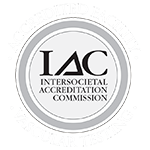
Leg pain is a common complaint that can be attributed to a variety of causes, both vascular and non-vascular. Understanding the nuances of different leg pain symptoms is crucial, as it can lead to early detection and effective management of underlying conditions.
In this blog post, we will delve into the distinctions between venous leg pain and arterial leg pain, shedding light on conditions such as Chronic Venous Insufficiency (CVI), Deep Vein Thrombosis (DVT), and Peripheral Artery Disease (PAD). Moreover, we'll explore how leg pain can extend beyond vascular issues, touching upon non-vascular conditions like edema and lymphedema.
Differentiating Between Venous and Arterial Leg Pain:
- Peripheral Artery Disease (PAD):
- PAD primarily manifests as claudication, a condition where pain occurs during walking and subsides with rest.
- Additional symptoms include numbness, weakness, and shininess in the legs.
- The pain is often described as cramping and is a result of inadequate blood flow to the extremities.
- Chronic Venous Insufficiency (CVI) and Varicose Veins:
- CVI and varicose veins, on the other hand, present with more constant pain.
- Symptoms include swelling, itching, burning, discoloration, and a feeling of heaviness in the legs.
- Varicose veins, visibly enlarged and twisted veins, are a common sign of venous insufficiency.
- Deep Vein Thrombosis (DVT):
- DVT is characterized by warmness, red skin, and heavy aches in the affected leg.
- Tenderness is often present, and the affected area may be swollen.
- DVT can lead to severe complications if not promptly diagnosed and treated.
Beyond Vascular Issues: Exploring Non-Vascular Causes of Leg Pain:
- Edema:
- Edema, the accumulation of fluid in the tissues, can cause swelling in the legs.
- Leg pain associated with edema is often a result of increased pressure on nerves and tissues.
- Lymphedema:
- Lymphedema, a condition where the lymphatic system is compromised, can lead to chronic swelling and discomfort in the legs.
- In severe cases, lymphedema can cause pain and decreased mobility.
Leg pain is a complex symptom that can arise from various vascular and non-vascular conditions. Recognizing the subtle differences in symptoms is an important first step towards an accurate diagnosis and effective treatment.
If you or someone you know is experiencing persistent leg pain, it is essential to consult a healthcare professional for a thorough evaluation. Early intervention can significantly improve outcomes and enhance the quality of life for individuals affected by these conditions. By increasing awareness and understanding, we empower individuals to take proactive steps towards better leg health and overall well-being.








